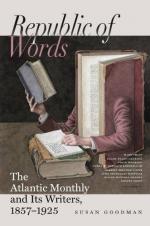Two styles of writing, diametrically opposed in every particular, have of late years flourished in the lighter productions of France. Some there are who would seek to incarnate in letters Nature as it is, without adornings, without ideal additions. The cry of the upholders of this doctrine is: Truth in art, war against the freaks of the imagination that colors all in unreal tints. The writers who have adopted such sentiments have been termed “Realists,” much to their dissatisfaction. Balzac was the greatest of them. Champfleury may be called the most strenuous supporter of the system. There is a certain force, a false air of truth, in this daguerreotype process of writing, that seduces at first sight. When a man of some genius, as Gustave Flaubert in “Madame Bovary,” undertakes to paint Nature, he sets details otherwise revolting in such relief that the very novelty and boldness of the attempt put us off our guard, and we are in danger of admitting as beauties what, after all, are only audacities.
The other extreme into which the literature of the day in France has fallen is an excess of fancy. A writer like Arsene Houssaye will write his “King Voltaire” or his “Madame de Pompadour,” or Capefigue his “Madame de la Valliere,” in which the judgment seems to have been set aside, and historical facts accumulated in some opium-dream are strangely woven into a narrative representing reality, with about as much truth as Oriental arabesques, or the adornings of richly wrought tapestry. This extreme is even more dangerous than the former, for it makes of letters a mere plaything, and recommends itself to many by its very faults. Paradox and overdrawn scenes usurp the place of the real. The world presented by the exclusive worshippers of fancy is little better than that “Pompadour” style of painting in which the carnation-tipped checks of shepherds and shepherdesses take the place of a too healthy Rubens-like portraiture. There are dainty, well-trimmed lambs, with pretty blue favors tied about their necks, just like dragees and bonbons. As we wander among those opera-swains in silk hose and those shepherdesses in satin bodices, their perfumes tire and nauseate, till we fairly wish for a good breeze wafted from some farm-yard, reconciled in a measure to the extravagances of the so-called “school of Nature.”
M. Merlet’s subject, it may be seen, is of interest merely to the student of the latest French literature. A more comprehensive study would not have been out of place in his volume. To those who may be interested in writers like Murger, Feydeau, Houssaye, and Brifaut, the book is full of interesting matter. To the general reader it may be of value as characterizing with fidelity some of the tendencies of French thought.
* * * * *




